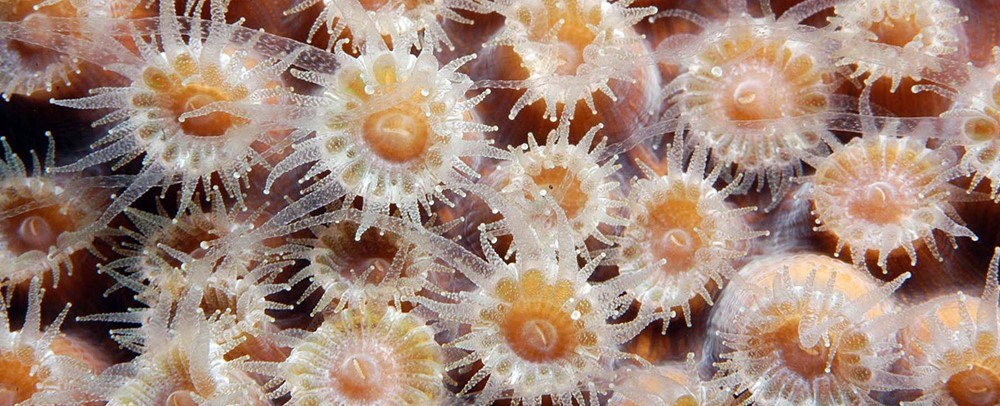Ocean Coral & Turquesa - All Inclusive Reviews
Coral Reefs

Coral Reefs are amazing habitats; offering vibrant colors and the greatest biodiversity of any marine ecosystem on the planet. Some coral reefs are and so large they are even visible from outer space! Merely coral reefs just occupy less than i 10th of ane per centum of the ocean flooring. The National Park Service has x parks with coral reefs stretching from the Pacific Sea to the Atlantic Ocean.
Types of Coral in National Parks
There are hundreds of species of coral plant in National Park oceans. National park of American Samoa has over 250 species of coral alone! Some mutual corals you can wait to find in national parks are elkhorn coral, staghorn coral, boulder coral and encephalon corals.

NPS Photos
How are coral reefs formed?
Corals reefs are formed over a process of thousands of years. Each coral reef is made up of colonies of tiny animals called polyps. Each polyp produces calcium carbonate, which makes up their skeleton and protects corals internal bodies; similar to how our skeleton protects our organs. Polyps on their own are colorless, notwithstanding, each polyp attracts big amounts of algae, called zooxanthellae. These algae live inside the cells of the polyp and gives corals their vibrant colors.
Corals, and the algae inside their polyps, rely on sunlight to produce the energy needed for them to survive and grow. That's why most coral reefs can be found in shallow, clear water forth the declension. Corals crave the marine weather condition found in the warm waters of the tropics and sub-tropics.

NOAA Photo/Schmahl
Benefits of Coral Reefs
Coral reefs are vital for a healthy ecosystem.
- Habitat: They support 25% of all marine animals, from thousands of fish species to sponges to marine mammals.
- Protection from storms: Coral reefs are as well our first line of defence force against tropical storms, helping to protect all of our littoral communities.
- Local Economies: Coral reefs back up tourism and recreation, drawing people from all over the world to see their cute and diverse ecosystems.
Threats to Coral Reefs
Coral reefs are frail and sensitive to changes in water quality and temperature. When pollution causes changes in water quality or temperatures exceed their natural tolerances, corals will go stressed and may die if conditions don't better.
Stressors to coral reefs are:
-
Rising h2o temperatures: Corals thrive in relatively warm water, but when water temperatures rising besides high, the zooxanthellae are forced to leave. Since these algae give the corals color, when they leave the coral becomes white, appearing bleached.This coral bleaching tin can cause the reef to dice.
-
Ocean acidification: Ocean acidification tin can bear on coral health by making less calcium carbonate bachelor in sea waters, making it harder for corals to course their skeletons.
-
Predation: Some species tin can cause impairment to coral reefs, like damsel fish and crown of thorn starfish. While they may not be invasive, outbreaks of these species can wreak havoc on reefs.
-
Overfishing: Coral reef ecosystems back up an affluence of species, simply overfishing tin can deplete these populations and effect the entire ecosystem.
-
Recreational Impacts: Gunkhole groundings and anchors can harm corals by breaking or scarring them. Sunscreens that include certain chemicals, harm corals reefs and other plants and animals that alive in the ocean. Protect yourself and the reef by covering up or wearing mineral-based sunscreens.
NPS Response
The National Park Service studies and monitors coral reefs closely to understand patterns in reef health. Coral reef parks have regulations to forestall impairment from boats and anchors. Certain parks likewise restrict fishing to maintain healthy populations of reef fish. In add-on to protecting corals, parks also restore coral reefs by creating underwater nurseries for coral fragments to grow. These fragments tin be placed onto reefs and will grow to form new reef structures and provide important habitat for marine life in the coral reef ecosystem.
Acquire More
Last updated: Feb 27, 2020
Source: https://www.nps.gov/subjects/oceans/coral-reefs.htm
0 Response to "Ocean Coral & Turquesa - All Inclusive Reviews"
Post a Comment